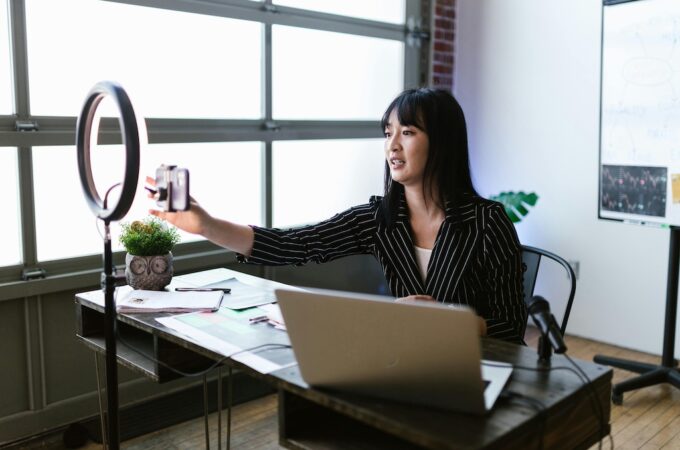
HOLAWHAT? MEET THE ALT-MANAGEMENT SYSTEM INVENTED BY A PROGRAMMER AND USED BY ZAPPOS
FAST COMPANY: Zappos CEO Tony Hsieh offered his nearly 4,000 employees an ultimatum last week: accept Holacracy or leave.
While the word may conjur images of a new-age cult, Holacracy is an alternative organizational structure that has been adopted by companies around the world—including Medium, the alt-publishing platform from Twitter cofounder Ev Williams, and the David Allen Company, the productivity consultants. It sheds traditional hierarchies for self-governing teams that get work done through tactical meetings. Zappos is the largest company to have adopted the system, and the transition hasn’t been entirely smooth. By multiple reports and now an admission in an internal memo, first posted by Quartz and obtained by Fast Company, people don’t love the idea of relinquishing their manager titles.
Nevertheless, Hsieh is anxious to fully embrace Holacracy, and is going all-in on the new structure by offering three months severance to people who don’t want to adapt. “We’ve been operating partially under Holacracy and partially under the legacy management hierarchy in parallel for over a year now,” Hsieh writes in the memo. “Having one foot in one world while having the other foot in the other world has slowed down our transformation towards self-management and self-organization.”
Holacracy was invented by Brian Robertson, a 35-year-old former programmer with barely any management experience. He created Holacracy in 2007 because he had a “burning sense that there has to be a better way to work together,” he said in an interview with Fast Company. Robertson, who describes himself as a coding savant, says he taught himself to program at age 6. By the time he was 13, he says he was charging $25 an hour for software development through the Sierra Network, an early competitor to AOL. “They had no idea how old I was” Robertson said. “I didn’t even know enough to name my business.”
After dropping out of the Stevens Institute of Technology, 17-year-old Robertson managed to get a job at Analytical Graphics, an aerospace company known for its perk-laced work culture. “You couldn’t beat the benefits, the environment, the culture. From a conventional view, they were really cool” he said. They had free meals, a gym, and a game room. Robertson had a great boss, who he still considers a friend and mentor. Analytical Graphics even won an award for being one of the best small companies to work for in the U.S. by the Great Place toWork Institute.
Robertson hated it.
“The bureaucracy seemed to be set up in a way that people couldn’t use their gifts, their talents,” Robertson said. In 2001, he started his own company to figure out a better way to run one.
Robertson certainly isn’t alone in his disdain for top-down order. Holacracy comes out of and operates within a milieu of unconventional ways to work that have become more popular in the last decade as younger and more visionary CEOs eschew tradition and seek out a new way of working. Among the options are sociocracy, Freedom at Work, the Morning Star Self Management System, and the Results Only Work Environment (ROWE). Each of those systems, including Holacracy, has a distinct approach to the same general problem. “The industrial age operating system is no longer compatible,” said Traci Fenton, the founder and CEO of WorldBlu, which preaches the Freedom at Work method used by hundreds of companies worldwide, including Zappos before it adopted Holacracy. (Zappos still uses WorldBlu’s services, which aren’t incompatible with Holacracy.*) “You have to move into the new age to realize we’ve outgrown the clothes.”
The hierarchical organization dates back to the industrial revolution, when companies wanted to preserve accountability while employing large numbers of people. “It was a way of organizing labor such that the division of labor would be more productive and would be able to do tasks better repeatedly in a predictable way,” says Ethan Bernstein, who studies organizational behavior at Harvard Business School.
As the American workforce moved away from the assembly line and into the cubicle, work no longer required people to repeatedly complete specific tasks. The information economy prizes ideas, creativity, and collaboration—all of which gets stifled by hierarchy. OneStanford study that looked at 80 different teams, both real world and lab simulated, found that hierarchy led to conflict at higher levels of management. “I found they didn’t reach as good of a collective or a group solution,” says Lindred Greer, who studies hierarchy at the Stanford School of Business.
As a result, the relationship between manager and employee has organically shifted over the last few decades. Almost half of the CEOs interviewed for a 2015 report by the London brand consultancy Wolff Olins said they had structured their companies to give employees more autonomy. The modern company is more of a conversation than a mandate.
But while the hierarchy may be flattening in many companies, the latest wave of non-traditional structures argue for more radical changes. The video game makerValve, perhaps the most extreme example, forgoes titles and managers altogether. In an ideal Holacracy, it’s impossible to tell who the CEO is.
Robertson spent six years exploring these different alternative organizational systems, picking and choosing the aspects he liked best—and trying them out on the 12 employees who he hired to build software products. He borrowed theories from the agile software movement and David Allen’s Getting Things Done. By 2007, Robertson took the “early embryo” of Holacracy and along with his business partner Tom Thomison, a former management consultant, founded HolacracyOne, the Pennsylvania based organization that acts as a kind of consulting firm for companies that want to adopt the system.
Along with the personal consulting services, HolacracyOne offers seminars that can cost up to $4,000 a seat, and it sells an organizational software application called GlassFrog that runs $500 a month. The software is optional, but both Medium and Zappos use it. HolacracyOne also has a healthy business training third-party coaches. Robertson is writing a book slated to come out this summer.
Unlike some of its contemporaries, Holacracy doesn’t advocate for a flat organization. Holacracy organizes work (and people) around circles within circles within circles. People within those circles have “roles” that give certain team members complete control over their domains. Someone at Medium, for example, is in charge of fonts and makes all font-related decisions. Contrary to headlines (including one on this website), Medium still has managers, because each circle has a leader. But unlike a traditional manager, not all decisions have to go through that one person, and that person can change—the structure of a Holacracy is very fluid. That’s why people don’t have titles, they have roles that often do change. The main objective is to distribute authority throughout an organization. Fewer decisions bottleneck through a boss, meaning faster decision making and in theory faster innovation. All of that makes Holacracy particularly appealing to companies that want to retain the benefits of fast-moving startups as they grow.
“Holacracy is not going to take a bad business idea and make it succeed. It’s not going to take a team that doesn’t have the skills and make it brilliant,” Robertson said. “It’s more of an accelerant,” he said. He likens Holacracy to getting a new computer. Generally, self-management systems promise happier employees, healthier workforces, and as a result a more successful company. Hsieh is so eager to ditch hierarchy because he wants his company to operate with the efficiency of a bustling metropolis, not a clunky corporate behemoth. Cities when they double in size get 15% more productive, companies lose productivity as they grow.
Completely restructuring a company from the standard org chart tree to circles is one of the reasons the transition to Holacracy tends to be rocky. To create circles and roles requires a very regimented process, called a governance meeting. Then, there’s a separate, also very systematic meeting for assigning particular people to particular jobs. Holacracy doesn’t have any rules for firing or compensation. Some companies, like Medium, create special circles that handle HR. Another approach is to give people roles that empower them to fire and promote. Companies can spend a lot of time thinking about their structure, rather than doing actual work, especially in the beginning.
All of the confusing rules and terminology tend to scare people, but that’s intentional. Obscurity, Robertson says, is part of a strategy to hook the right converts. “My sales approach is to try to talk people out of it,” he says. The Holacracy website doesn’t make it easy to understand what a company might be getting into. The “in plain English” version of the Holacracy Constitution is multiple mouse scrolls long. Robertson likens his method to that of Nigerian email scammers. “They are filtering out all the people that are not ridiculously gullible, only the ones that are really good targets are left. For us, it’s the positive version of that.” Robertson wants to attract people that get it, like Hsieh and Medium CEO Ev Williams.
Of course, just because bosses can overlook the eccentricities of Holacracy for its potential, employees aren’t always as open. The name alone is off-putting. When Williams first introduced Holacracy to Medium, multiple employees thought it sounded cultish. “I think it used to be Holawhat? That sounds like a cult,” Jean Hsu, an engineer at Medium told me.
Accepting Holacracy is like learning a complicated strategy game, like Settlers of Catan, says Robertson. “If you’ve ever learned to play a complex board game, all you see are a bunch of rules,” he says. “That said, if you play the game with people who have played it before they walk you through it, eventually the rules totally fade to the background.” Similarly, the best way to learn Holacracy is by playing. For new converts, Holacracy runs a taster week, during which a consultant simulates tactical and governance meetings.
Medium, which implemented Holacracy about three years ago, had a rough adjustment phase, too. Governance meetings can take hours. People got stressed about understanding the system, and began neglecting their jobs as a result. “Being bad at something is frustrating,” Williams told me. “To do that something else that we’re good at actually, we have to do this thing we’re bad at. As a group, we’re going to do this awkward dance. It’s hard and messy and it causes stress, and you’re like, ‘why are we doing this?'”
The tactical meetings, a replacement for your standard, generally very painful weekly team gathering, won over Medium’s staff—and it’s easy to see why, they’re fast and efficient. This February I sat in on one at Medium’s San Francisco headquarters, and while from the outside it looked like a normal meeting, the process was incredibly regimented. An engineer with a clump of curls named Koop facilitated, ensuring that conversations stayed on track. The heart of the tactical meeting is a process calledtension processing, where, one by one, team members talk out their “tensions,” which in Holacracy land means any issue someone might have. In Medium’s case tensions ranged from the design of the site to the circle’s name. Because of Koop, the group stayed on track, getting through 20 issues in about 25 minutes. The meeting also moves quickly because “processing a tension” just means deciding on a next step, not coming to a solution.
Over half a dozen current and former employees I spoke with—even ones who didn’t like Holacracy in general—mentioned the benefits of tactical meetings. Having sat through one at Medium, I can confirm that they are way better than standard team meetings. Stuff gets done, fast.
At this point, it’s too early to tell if Holacracy is working for either Zappos or Medium, says Robertson. Holacracy, however, uses the David Allen Company as a case study. Although, even CEO Mike Williams considers it “a work in progress.” Unlike Zappos, Medium has a less dramatic relationship with Holacracy. Most people I talked to at the company like it. (Although they’re very self conscious about how weird it sounds. Questions about Holacracy are often met with awkward laughs.) “We could be organizing a different way, but I kind of couldn’t imagine it given what we’re trying to do,” Kate Lee, a senior editor at Medium, told me. Then again, the company is much smaller (about 80 people), implemented Holacracy early on, and has a few more years practice. Also, Medium isn’t successful by the most standard of metrics: it makes no money. “It’s [Holacracy] not a complete system. It’s not the answer,” in and of itself, added Bernstein.
By Hsieh’s standards, Zappos hasn’t reached its potential. The journey takes about five years and chaos at the beginning is expected, says Robertson. “When I see everything that’s going on at Zappos, it’s all part of the shift.”





